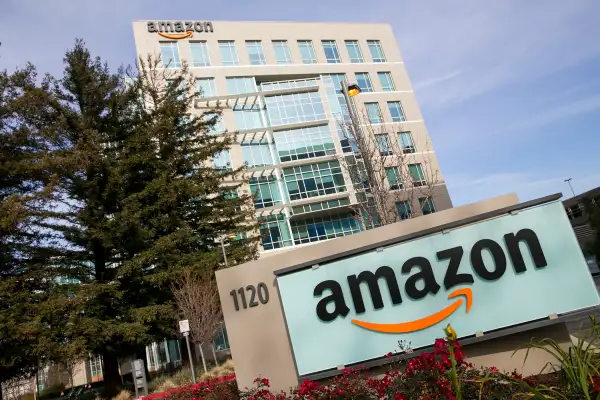Amazon, Airbnb and Dozens of Other Companies Pledge to Address Gender Pay Gap

Over the past eight years, the Obama administration has fought aggressively against the persistent gender pay gap in the country, contending that women should no longer earn just 78 cents, on average, for the man's dollar for the same work. Now, some of the largest companies in the U.S. are taking it upon themselves to address the pay gap in their own ranks.
Twenty-eight companies, including Amazon, Airbnb, and PepsiCo, signed the White House Equal Pay Pledge, just ahead of the United State of Women summit, which began today and will address economic issues including pay inequity. By committing to the Equal Pay Pledge, the companies have agreed to analyze company-wide pay across occupations, review the hiring and promotion processes, and institute "equal pay efforts into broader enterprise-wide equity initiatives."
"We believe that businesses must play a critical role in reducing the national pay gap," the pledge reads.
The 28 companies that signed the pledge include: Accenture, Airbnb, Amazon, American Airlines, BCG, Buffer, Care.com, CEB, Cisco, Deloitte, the Dow Chemical Company, Expedia, Inc., Gap Inc., Glassdoor, GoDaddy, Jet.com, Johnson & Johnson, L'Oréal USA, PepsiCo, Pinterest, Popcorn Heaven, PwC, Rebecca Minkoff, Salesforce, Slack, Spotify, Staples, and Stella McCartney
Read Next: 6 Excuses for the Gender Pay Gap You Can Stop Using
The Obama administration's efforts to close the pay gap began almost as soon as the president took office. The first bill he signed as president was the Lilly Ledbetter Fair Pay Act, which epands the window of time people have to file an equal-pay lawsuit. In January 2016, the White House and the Equal Employment Opportunity Commission put forth a proposal that would require companies with 100 or more employees to annually report summary pay data by gender, race, and ethnicity. Obama also extended minimum wage and overtime benefits to over 2 million home healthcare workers, the vast majority of whom are female.
Still, more can be done. While equal pay is a critical step for many working women, others would like to see paid parental leave policies and subsidized child care implemented. Right now, the United States is one of two countries—the other is Papua New Guinea—that do not offer paid leave to parents (currently, parents can take 12 weeks of unpaid leave if they work for companies with 50 employees or more, a criteria that more than 40% of U.S. workers do not meet). A report published by the White House Council of Economic Advisers in 2014 concluded that paid leave policies would help women get back into the labor force. That would in turn help close the wage gap, since women typically start seeing their pay plateau around age 35 (men, on the other hand, don't experience a pay plateau until age 50 to 55), due in part to gaps in employment and time off to have children.
The White House also reported it will finalize rules updating its sex discrimination guidelines for federal contractors for the first time since the 1970s. The Department of Education and Harvard Law School’s Negotiation and Mediation Clinical Program also have developed a toolkit to help community college students negotiate their salaries. (See more salary negotiation tips for women here.)
